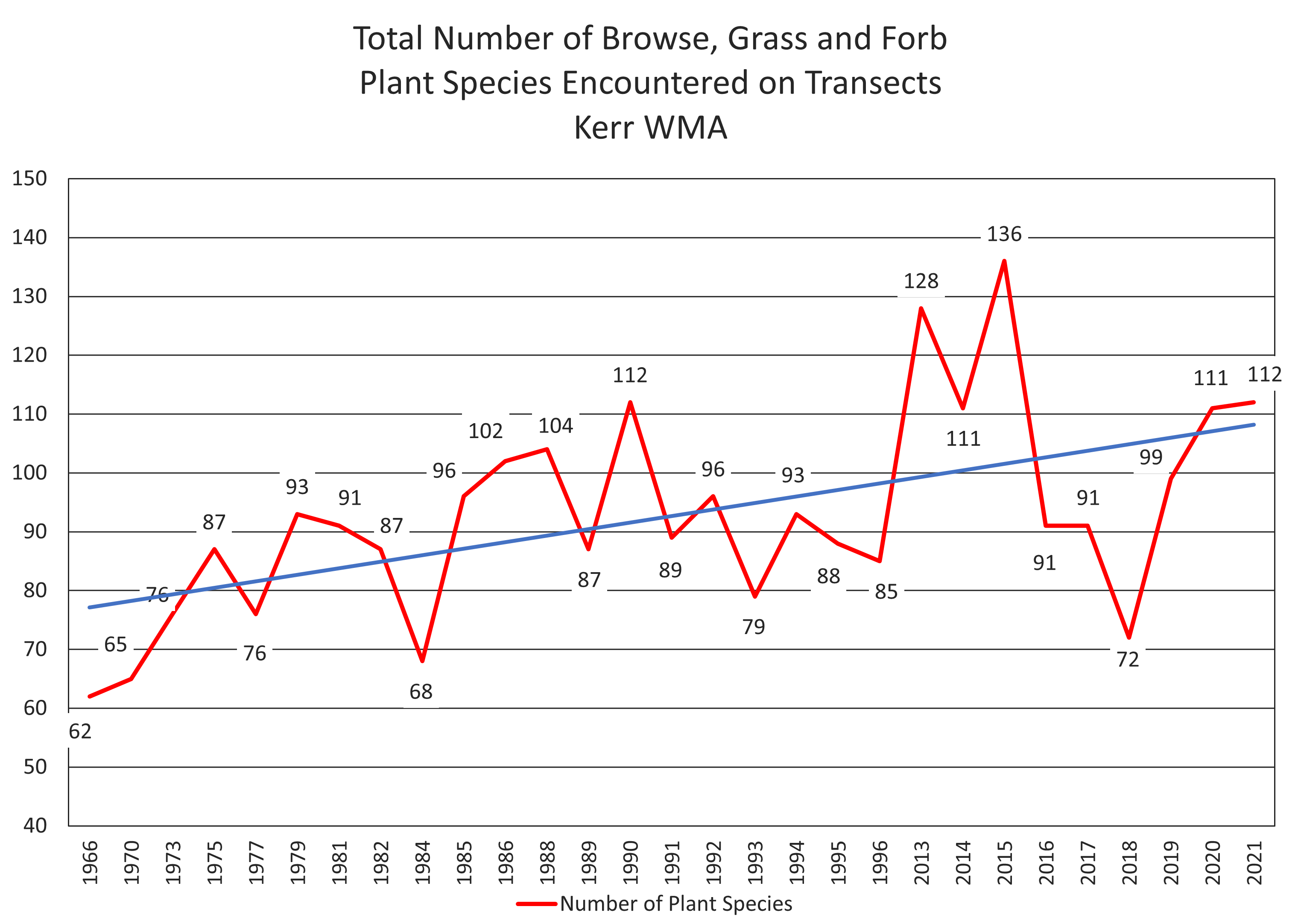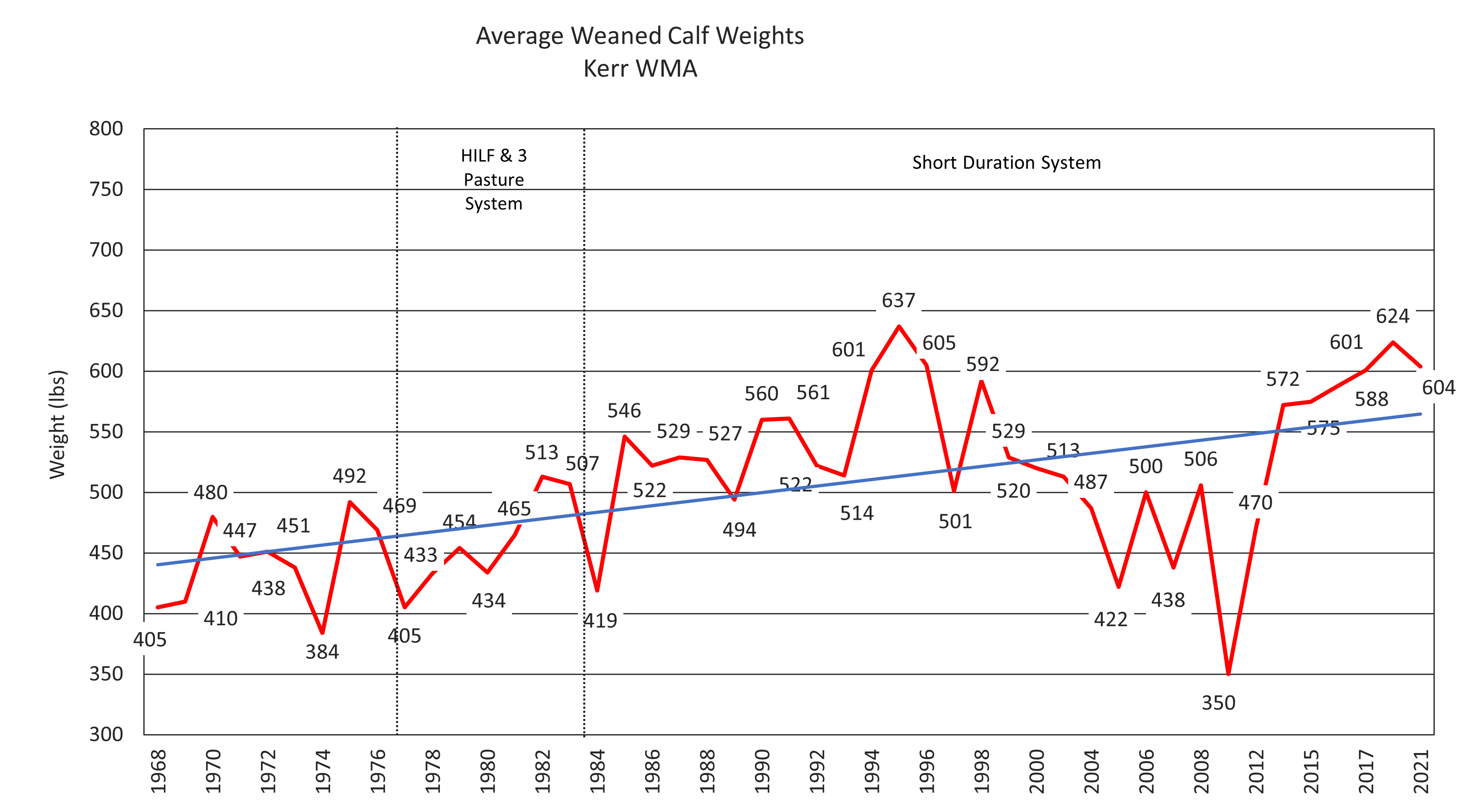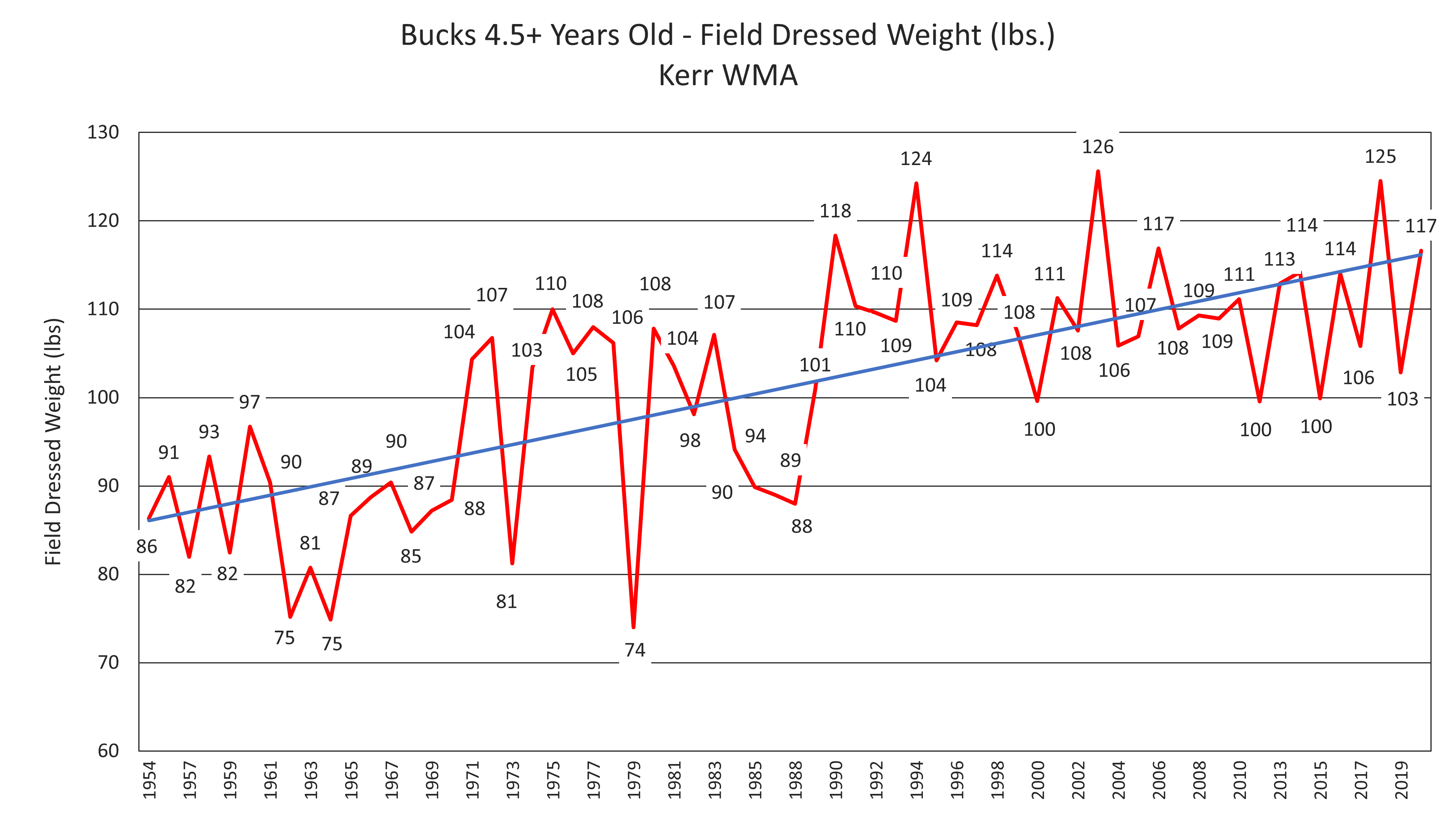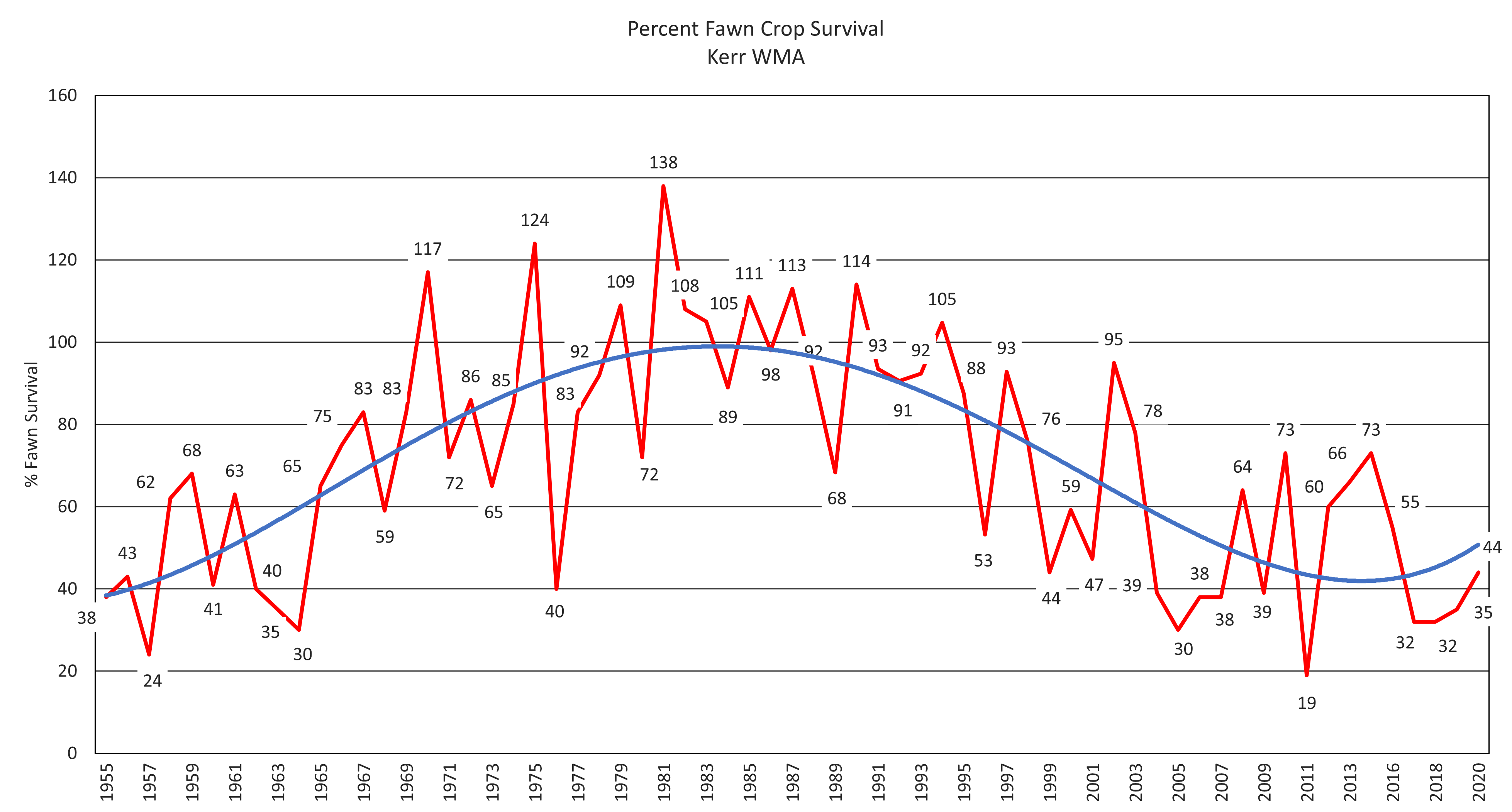Kerr WMA Management Programs Data
- Habitat |
- Cattle |
- Buck Weights |
- Fawn Crop
Habitat Improvement — Vegetation Trends
The combination of habitat management practices on the Kerr WMA has increased the overall diversity and production of grass, browse and perennial forbs.
Cattle — Calf Weights
Under a proper grazing system and the holistic management program implemented on the Kerr WMA, calf weights at weaning have increased by 130 pounds since 1968.
White-tailed Deer — Buck Weights
Since 1954, average field dressed weights for bucks (harvested during public hunts) of all age classes have increased. This is a direct response to improved habitat quality created by rotational grazing, prescribed burning, juniper control, and managing the populations of white-tailed deer and exotics.
White-tailed Deer — Fawn Survival
Fawn production on the Kerr WMA significantly increased until the early 1990’s when we started to see a slight decline. This is likely due largely to changes in predator populations seen regionally, primarily coyotes and also changes in climatic conditions.



